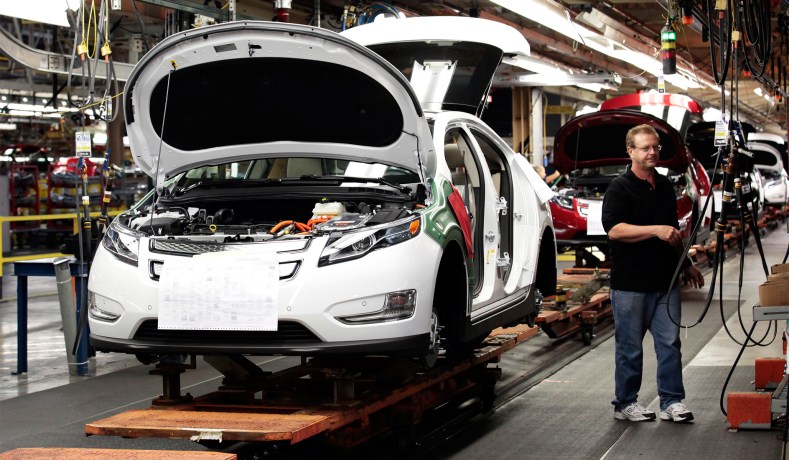

Faced with the bad news from GM — which is discontinuing several passenger-car lines, shuttering five North American factories, and laying off thousands of workers — President Donald Trump responded with his habitual bluster, telling GM they “better damn well open a new plant” in Ohio, and boasting that he was “very tough” on the automaker’s CEO.
As is often the case, President Trump’s bluster is unhelpful.
General Motors almost certainly is doing the right thing, as painful as that is going to be for the workers who lose their jobs and for the communities that had relied on — and taken pride in — those factories. GM is moving away from its less profitable (and, in some cases, money-losing) passenger-car lines to concentrate on building trucks and SUVs — which is to say, on the things that GM is good at, the GM products that customers actually want.
The sedan business has long been a low-return proposition for GM, which is following the lead of Ford, which is reducing its American production to trucks, SUVs, and the Mustang. GM has long been neither fish nor fowl in this market, which is dominated at the low to middle price points by Asian, mostly Japanese, marques, though many of those cars are manufactured in the United States, such as the Kentucky-built Toyota Camry. Who is an “American” automaker is an increasingly complicated question: GM’s shareholders live around the world, and many of Toyota’s employees live in Texas. At the other end of the market, Cadillac and other domestic luxury brands have long been excelled by European competitors. That left very little room in the market for GM to find a profitable perch.
GM’s restructuring was always in the cards. The billions of dollars in subsidies the firm received ten years ago as part of the 2008-09 bailouts — bailouts meant to prevent precisely the sort of job losses we are seeing now — only delayed the deeper and more fundamental restructuring of the business that was needed.
This is a politically embarrassing development for President Trump, who has sold himself as the tribune of American manufacturing and industrial concerns, who boasts — and no doubt genuinely believes — that the success or failure of these businesses vis-á-vis foreign competitors is only a matter of negotiating deals and being “tough.” Much progress has been made in the past two years — more than Trump’s critics expected — which have seen critical reforms in the tax code and a measure of regulatory relief. But the underlying economic realities cannot be negotiated away. And while political leaders should encourage a thriving and dynamic labor market — and the job-creation and wage growth that goes with it — jobs are not a social program. Jobs are a means, not an end, and jobs dedicated to producing products that consumers do not want are jobs that are not going to last and never were.
GM’s business is putting dividends in the pockets of its shareholders. And while it is easy (and all too common) to overstate the president’s role in the economy at large, seeing to the continuing reforms that will help to drive economic growth, employment, and wages is President Trump’s job. GM isn’t asking for Trump’s advice, and he isn’t qualified to give it. Bluster isn’t going to see a single GM worker to his next job nor change the fact that Toyota builds cars that consumers want while GM doesn’t.
Change can be painful and disruptive. Ask Packard.



